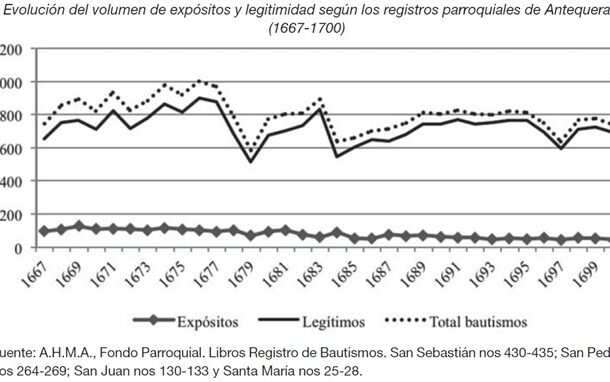The graph shows the number of marriage dispensations in relation to the total number of marriages between 1773 and 1832 in the Kingdom of Murcia. These dispensations were granted by the Church when the spouses had consanguinity; kinship in different degrees. From 1780, the increase of consanguineous marriages is progressive and, within the social profile of the peasants, they used it as a strategy to consolidate the family by establishing double marriages. At times of change between the Ancien Régime and the liberal state, a decreasing trend of dispensations has been observed; rather, at the beginning of the 19th century, the Church relaxed these necessary dispensations by changing the degrees of prohibition. The authors point out that, while the number of dispensations decreased, the actual number of consanguineous marriages increased due to this greater permissibility.
Collection: Graphics
Project: 3. Rural world and urban world in the formation of the European identity., 4. Family, daily life and social inequality in Europe.
Chronology: XVIII, XIX
Scope: Secondary Education, Baccalaureate, University
Resource type: Graph
Format: Bar chart
Source: Chacón Jiménez, F., Henarejos López, J. F. (2019). "El matrimonio campesino en el Sur de Europa (El ejemplo del Reino de Murcia: 1773-1832). Hipótesis de interpretación", en Revista de Demografía Histórica, XXXVII, 2, p. 167.
Language: Spanish
Date: 2019
Owner: Pablo Ballesta Fernández (Modernalia)
Copyright: ©Revista de Demografía Histórica ©Francisco Chacón Jiménez ©Juan Francisco Henarejos López
Abstract: Resource showing the number of marriage dispensations due to different degrees of consanguinity of the contracting parties
Image
Tags







